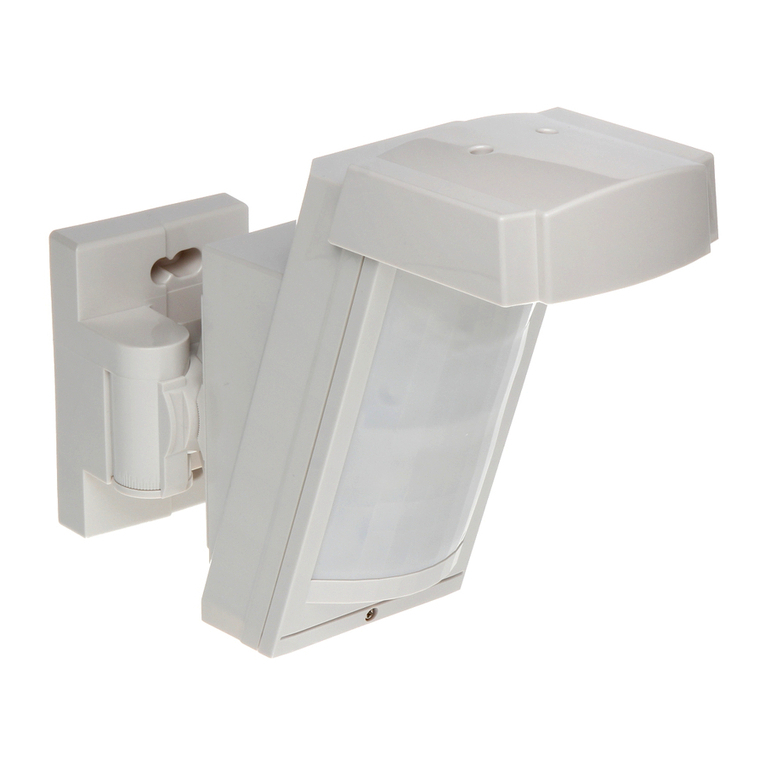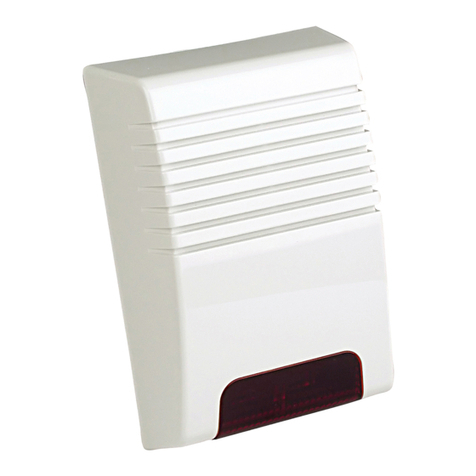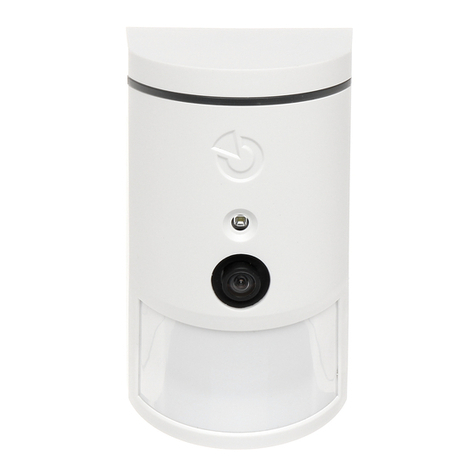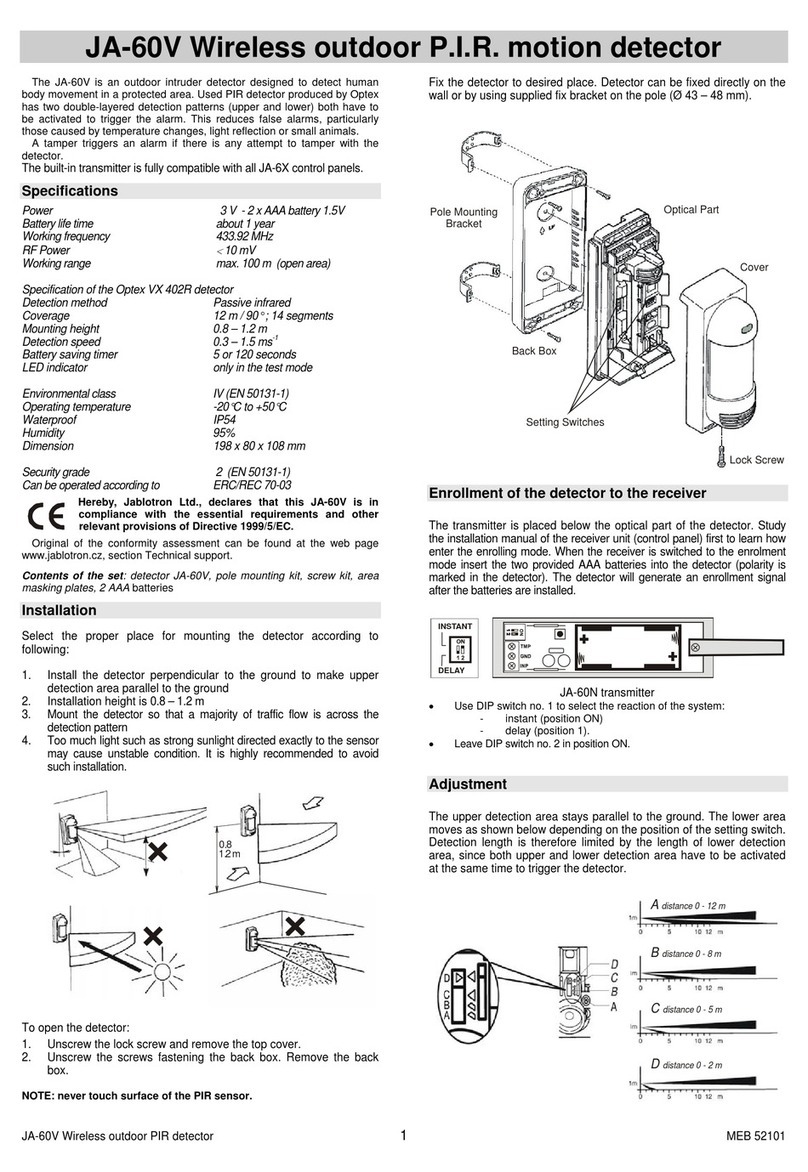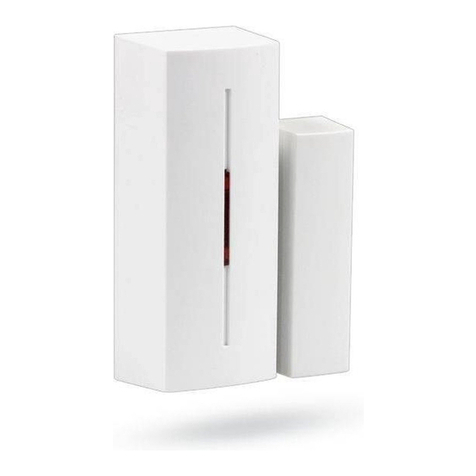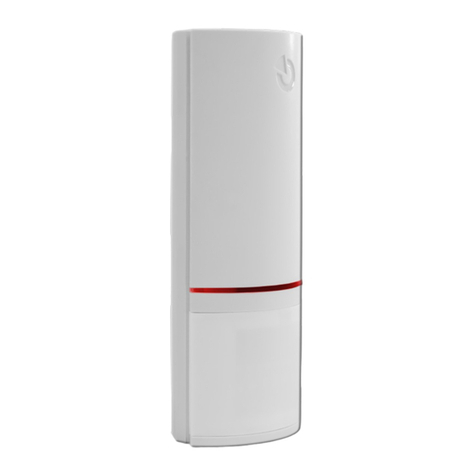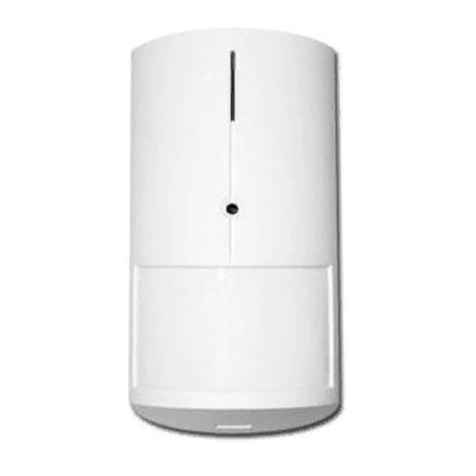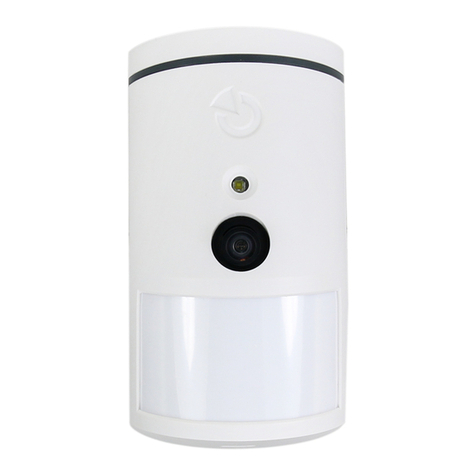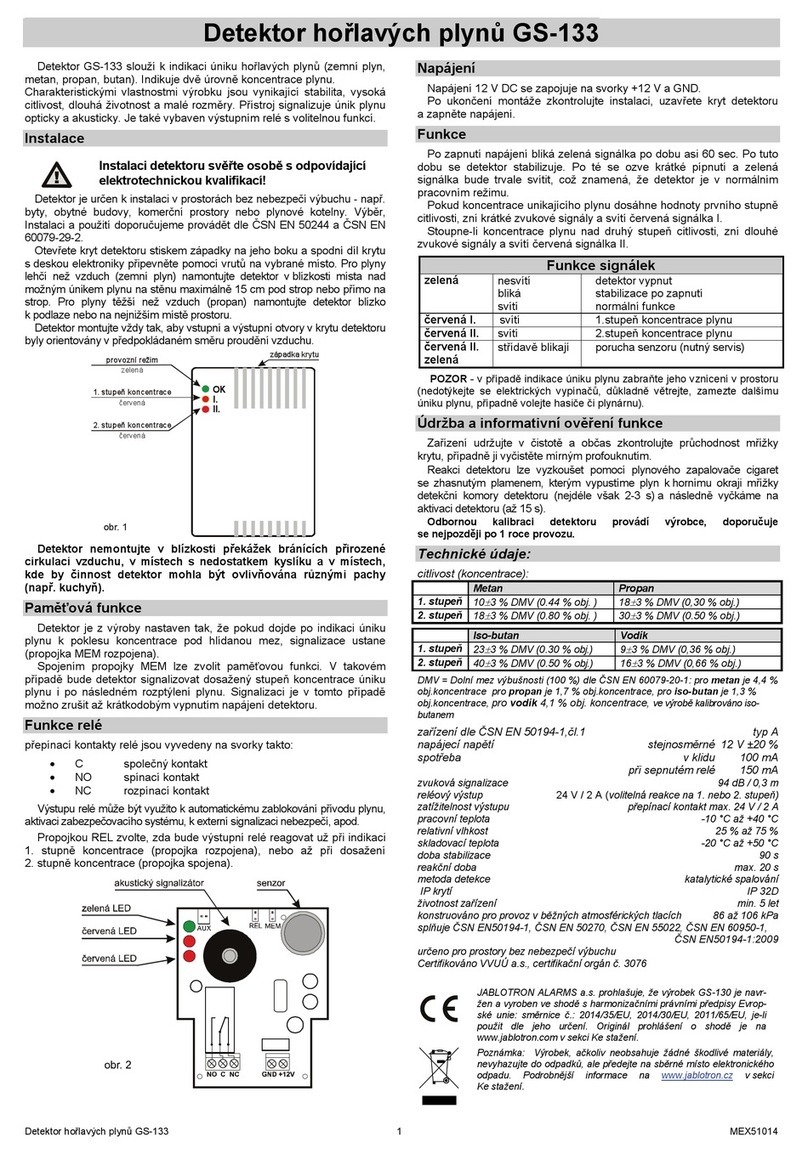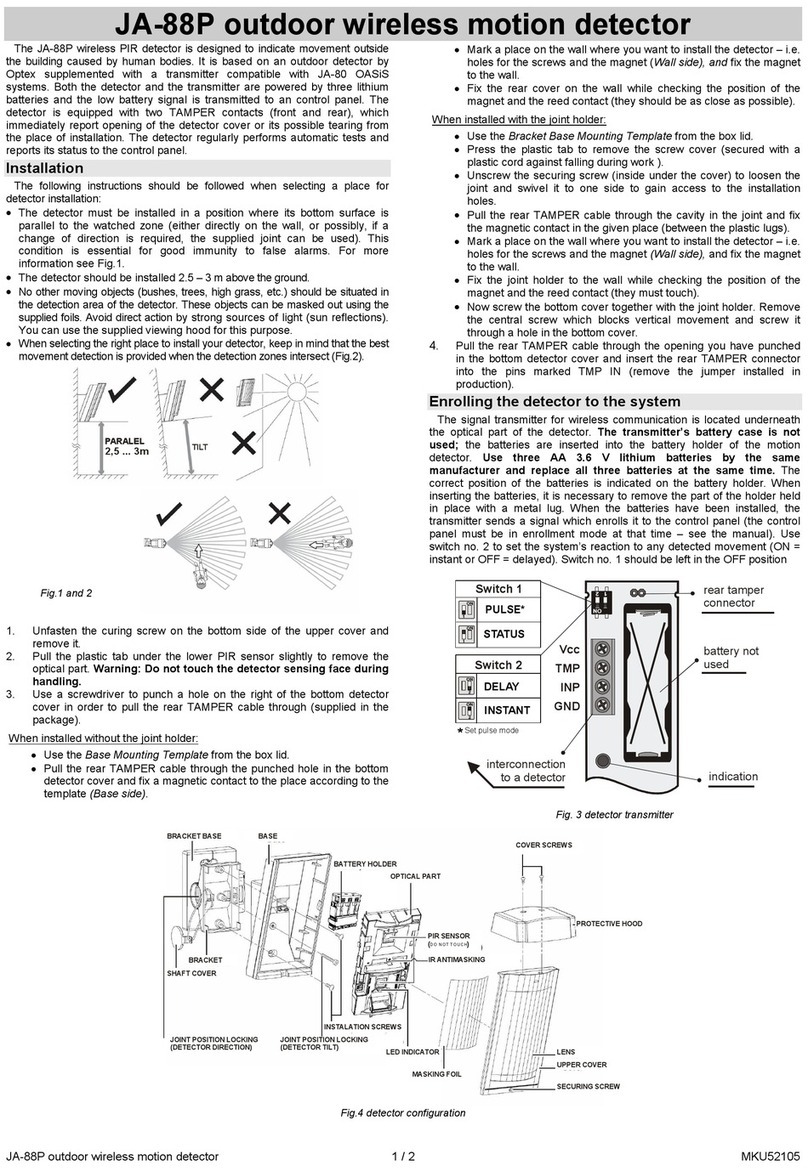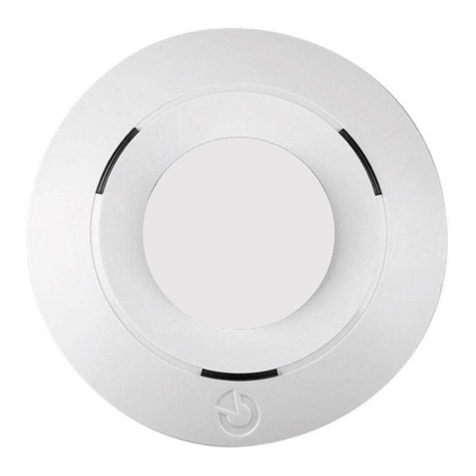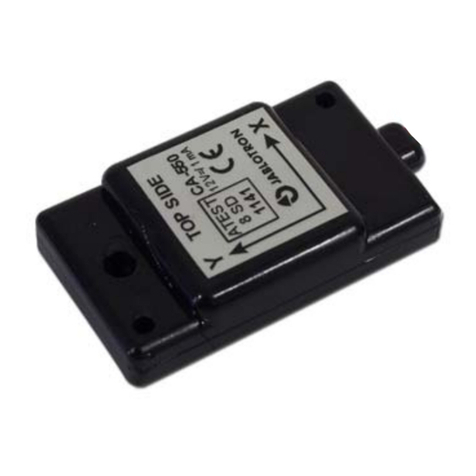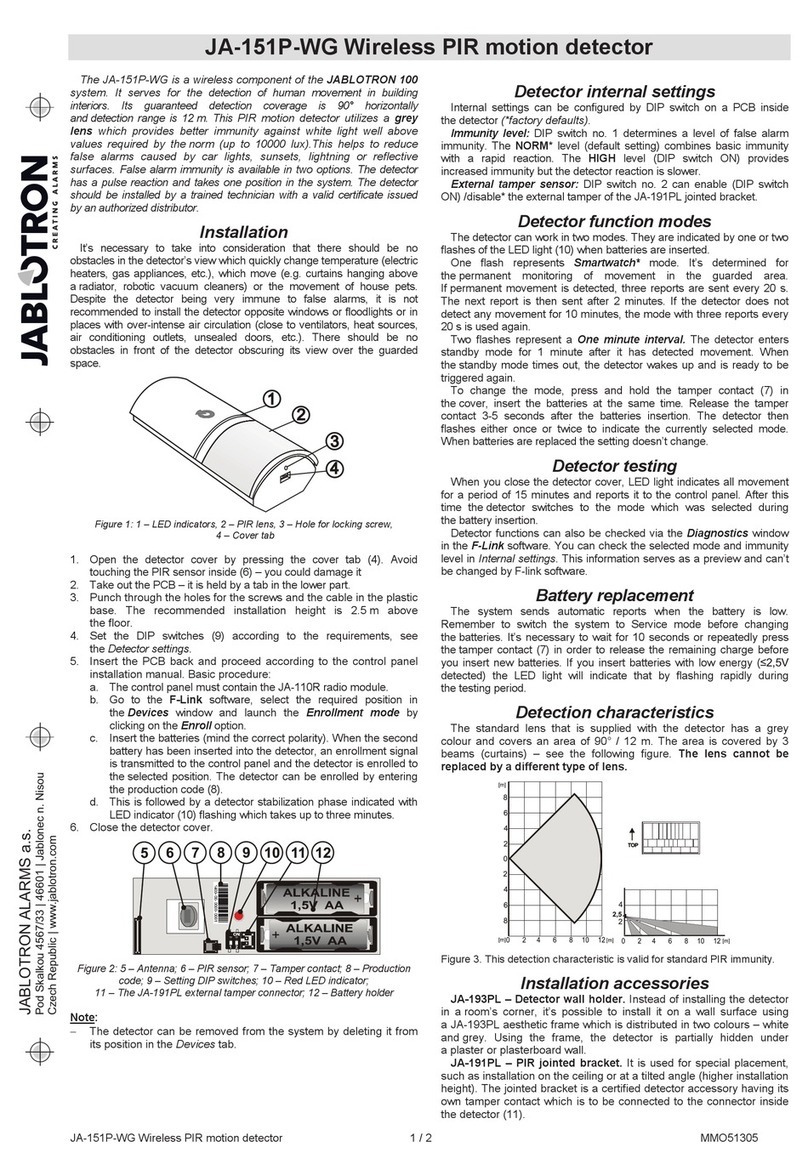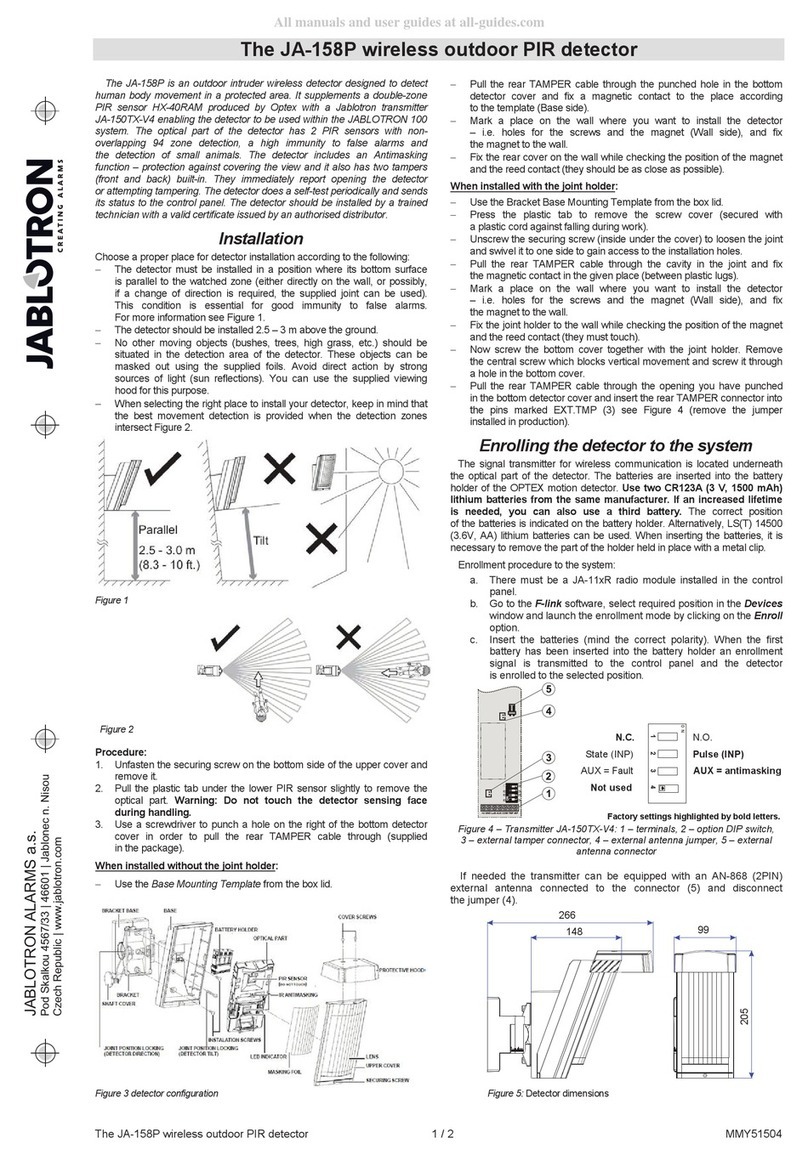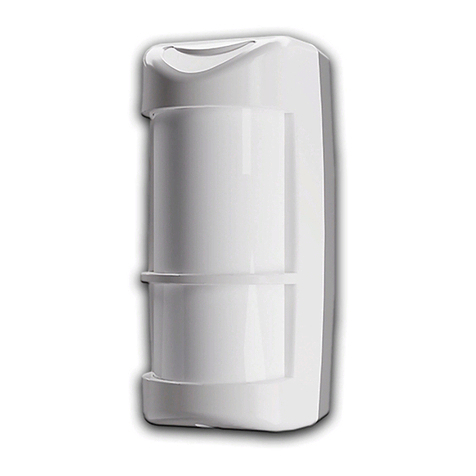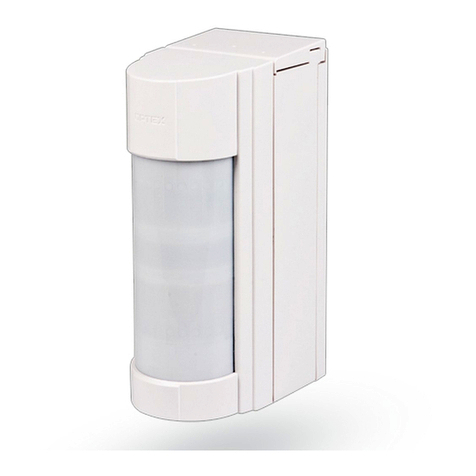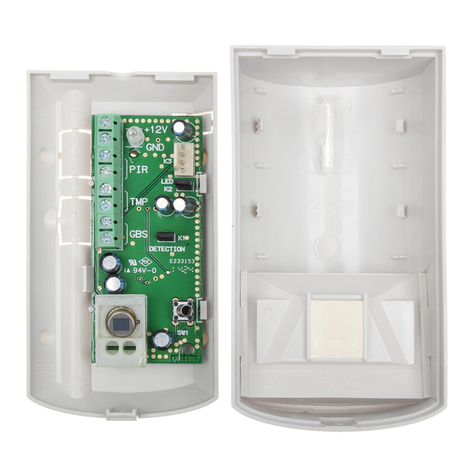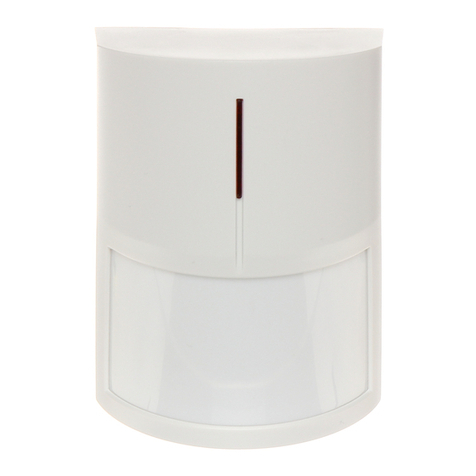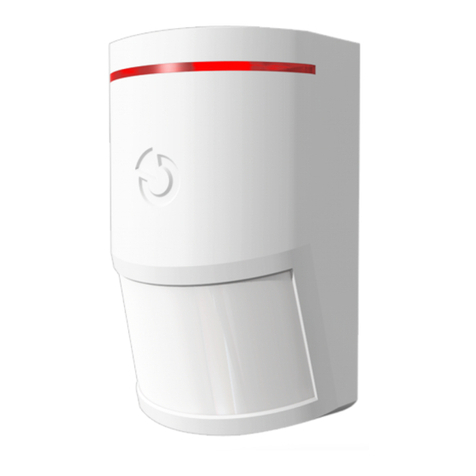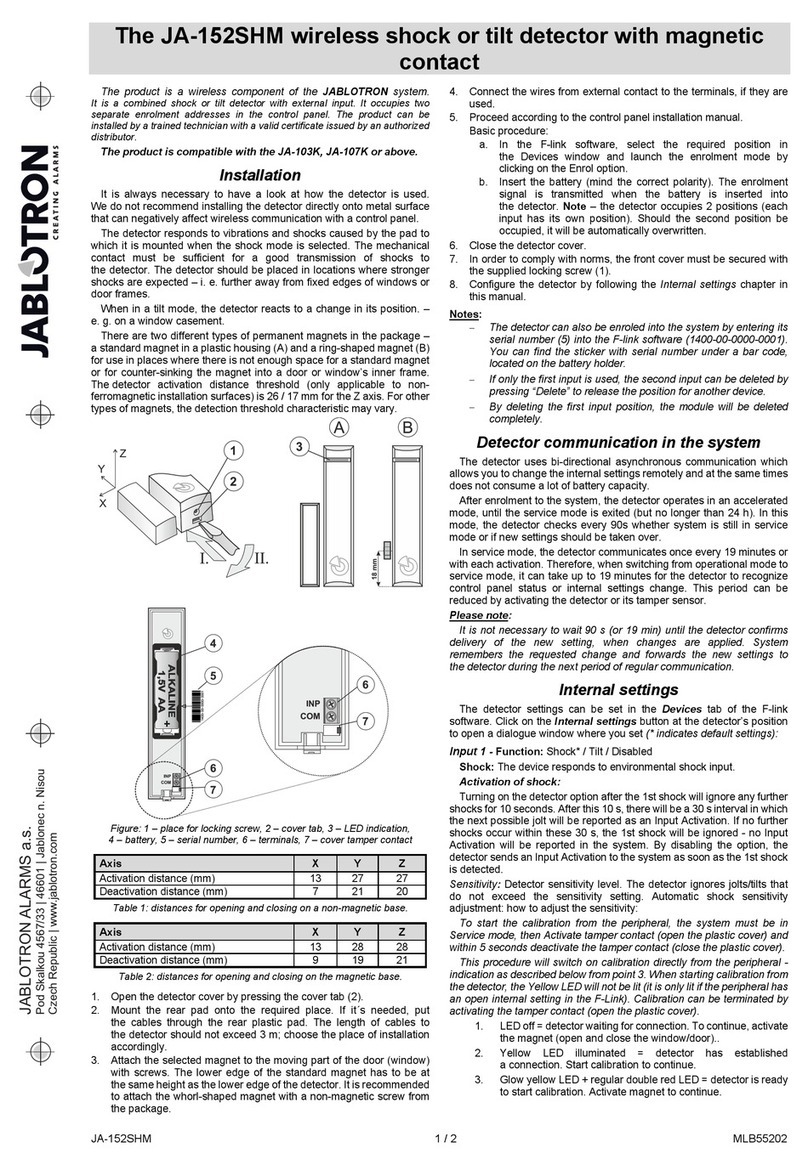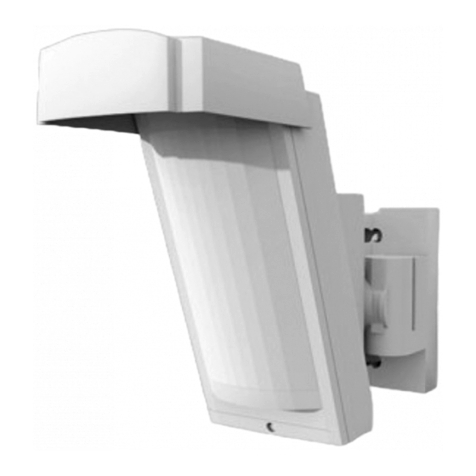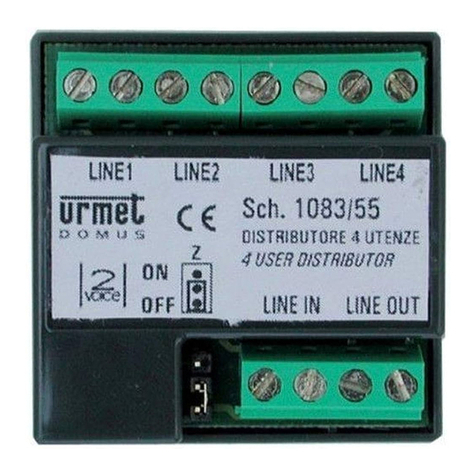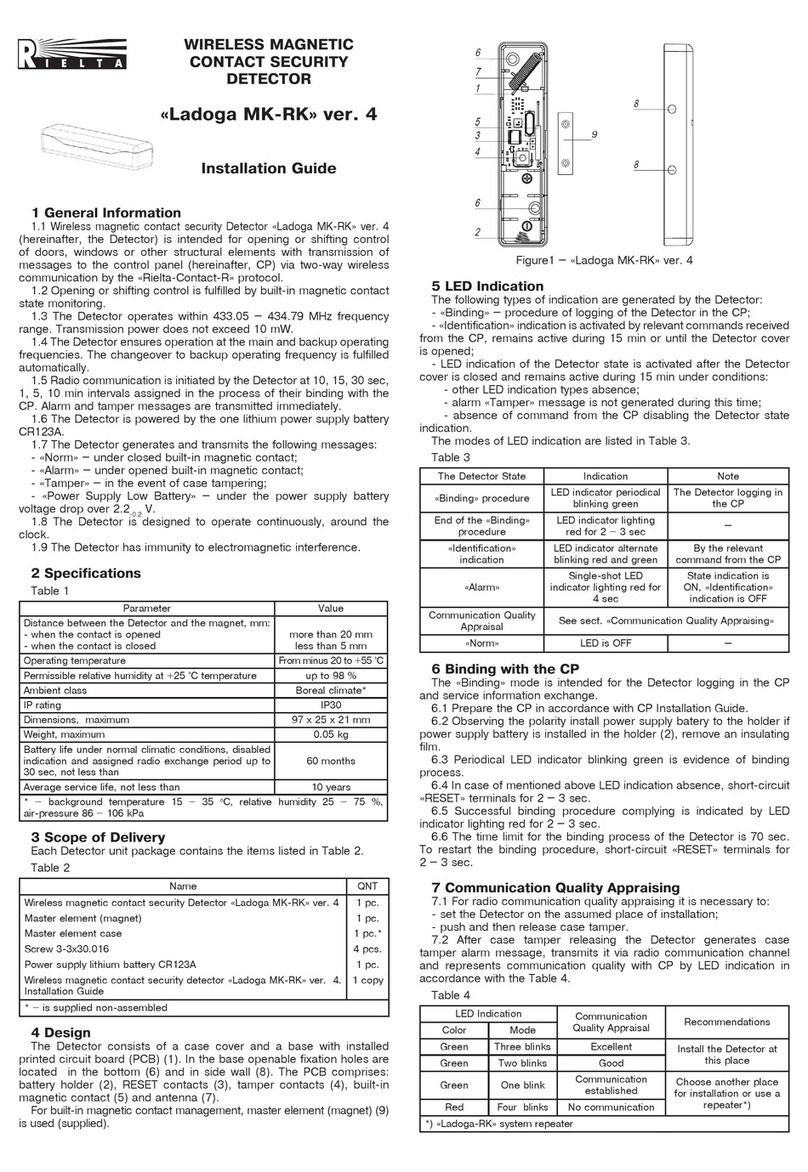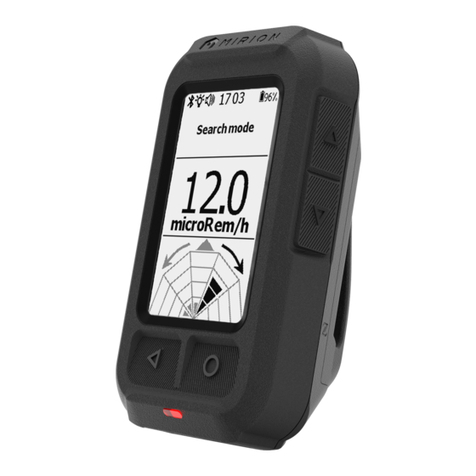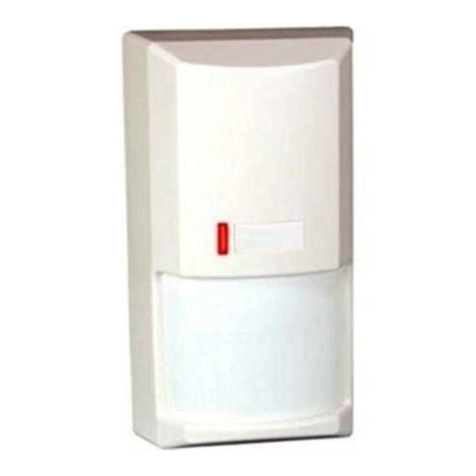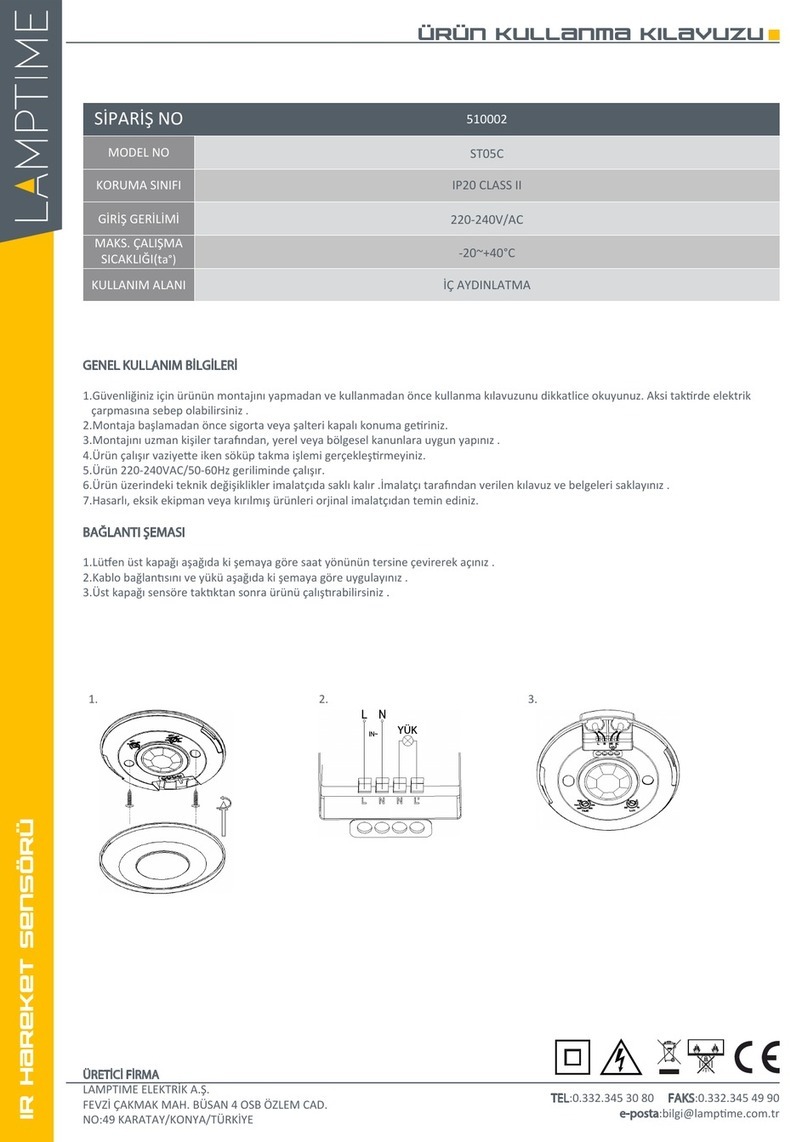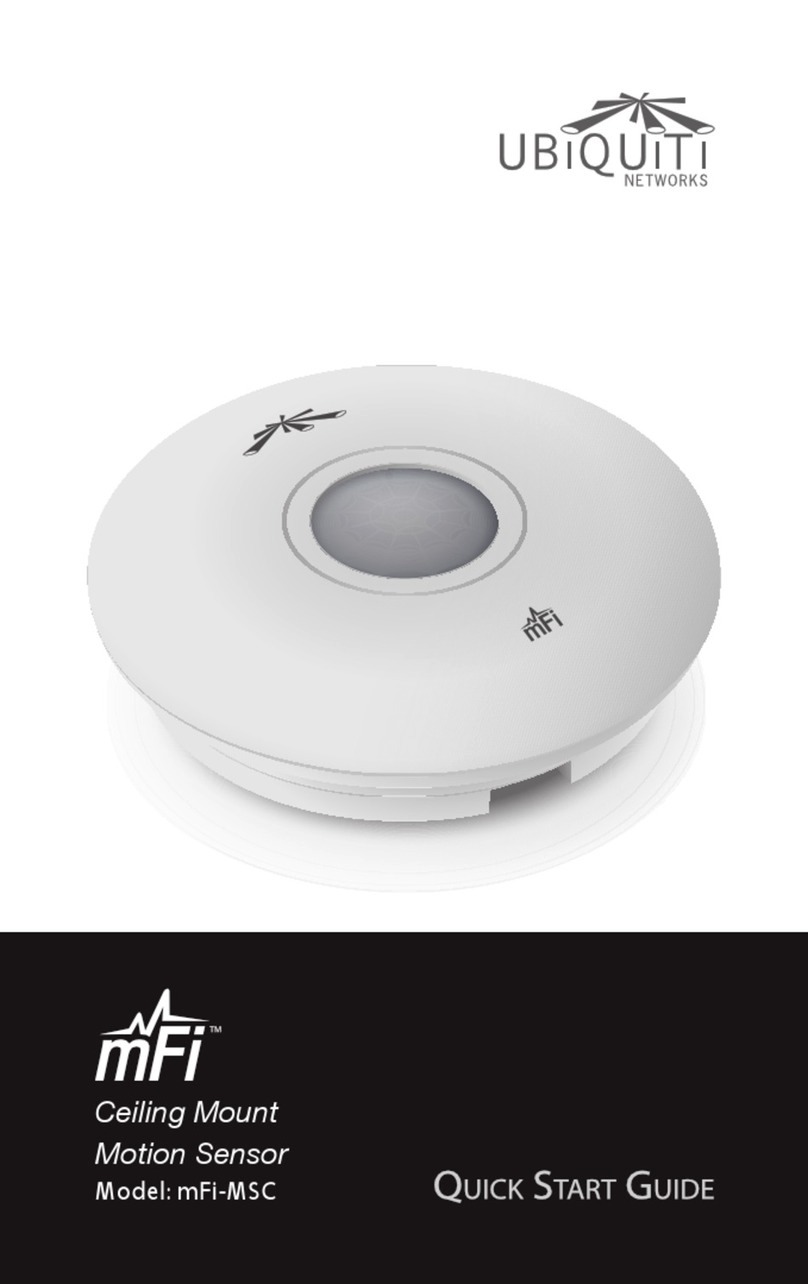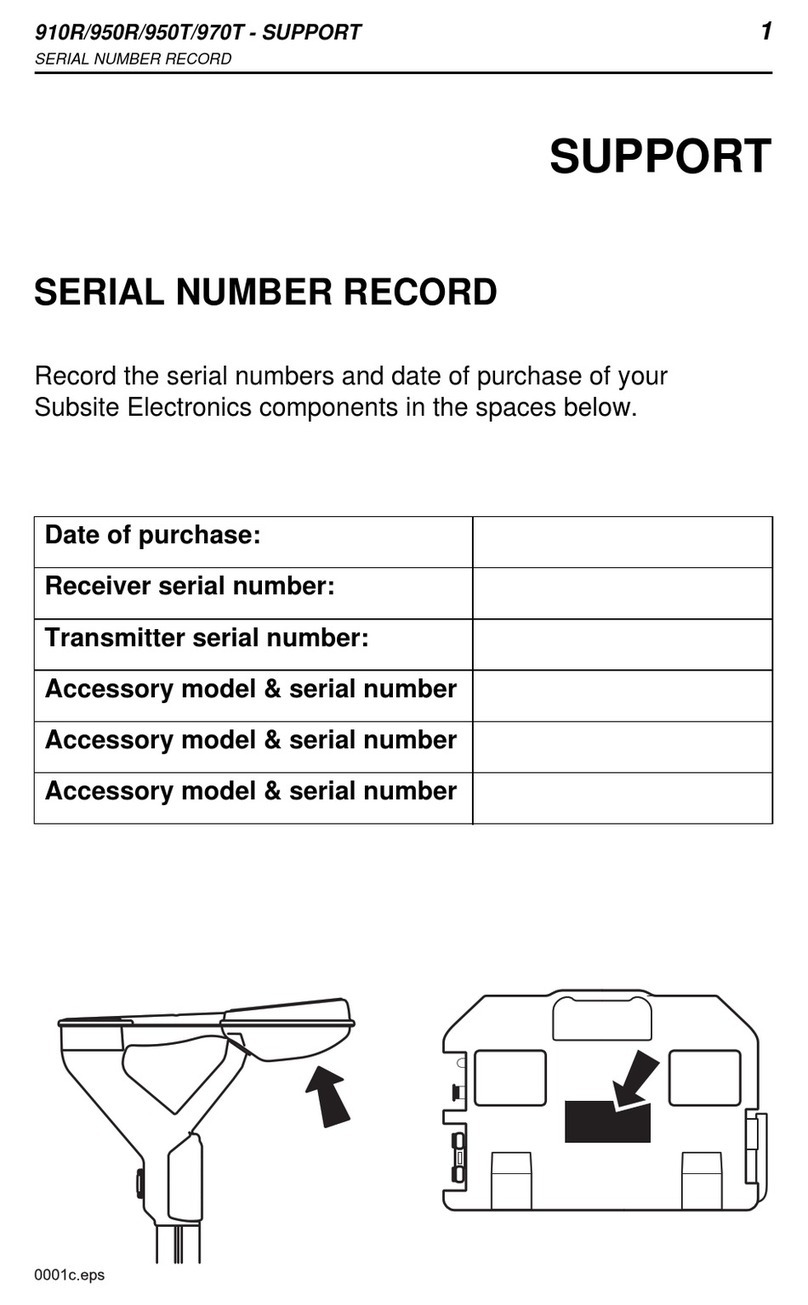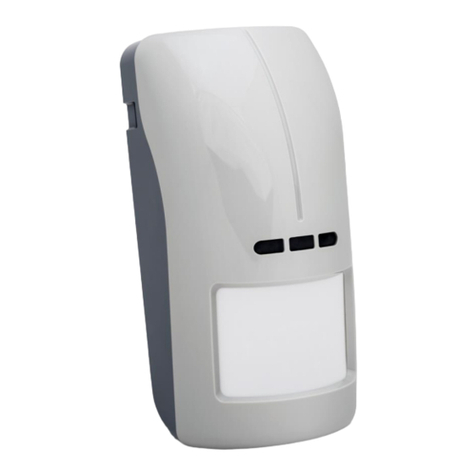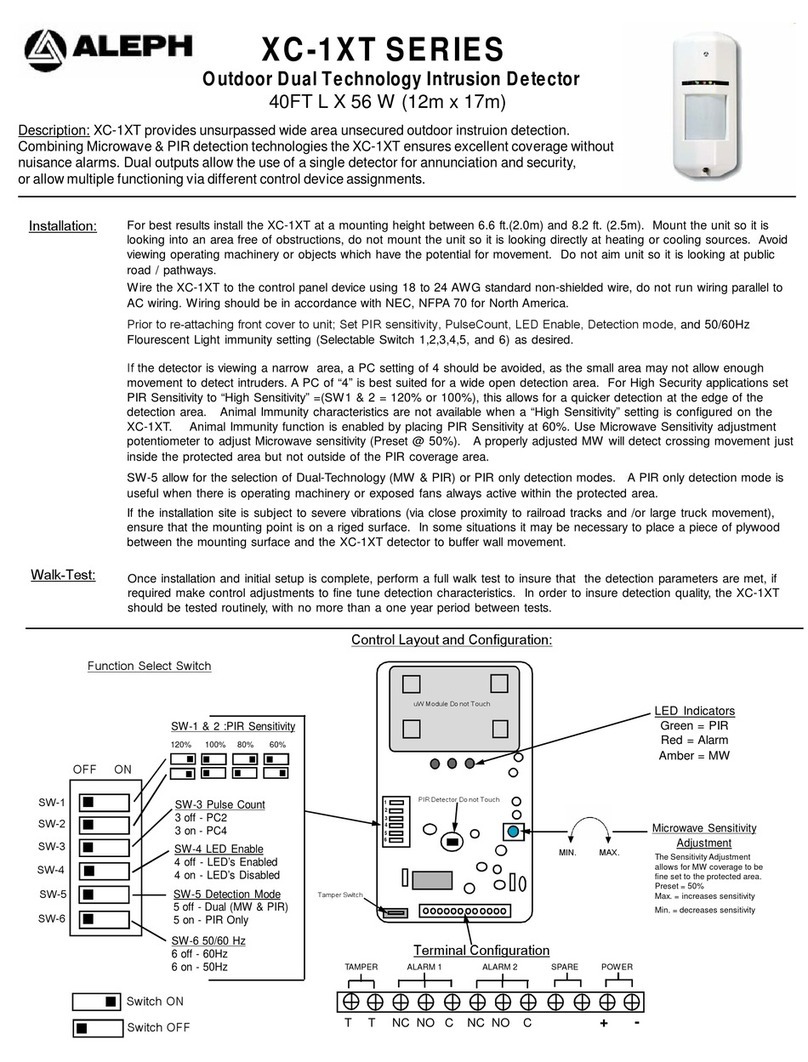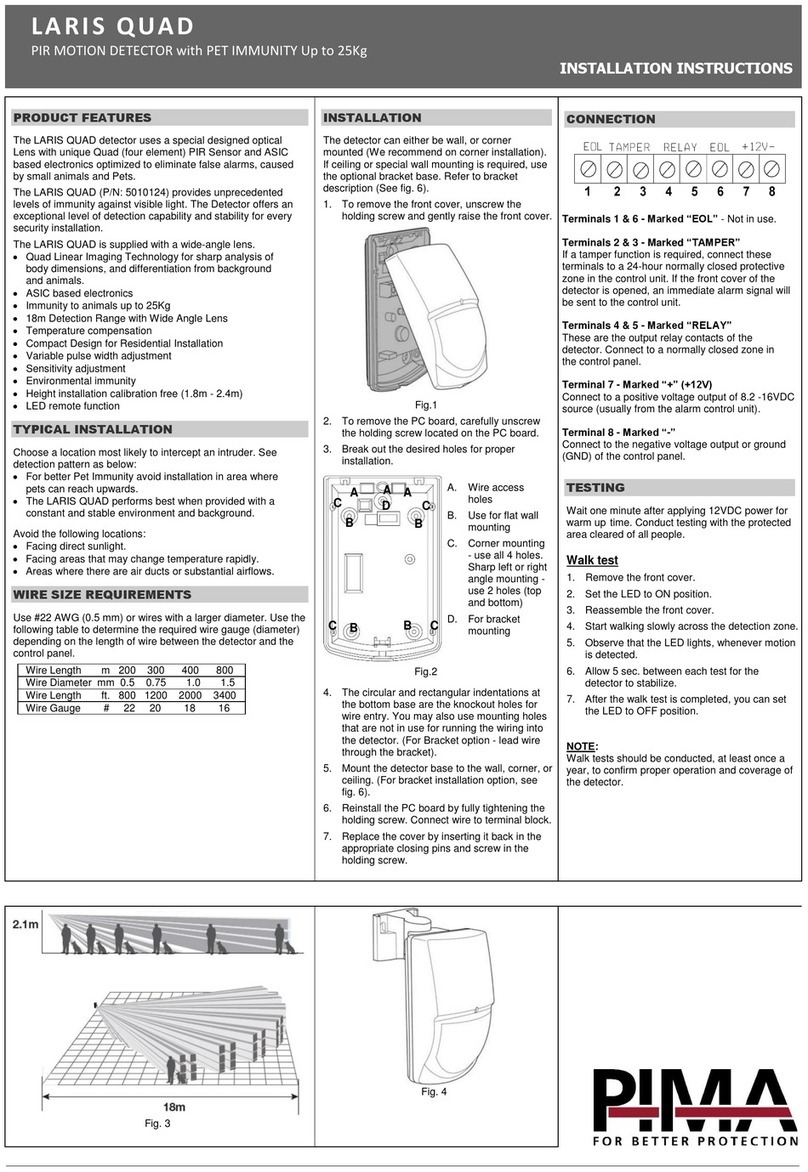
Fig. 3: 1 - ON; 2 - OFF
5) If the detector is OK, all three LEDs will flash briefly in sequence
and all symbols on the display (Ei208DW) will light up.
6) In order to make the detector resistant to unauthorized removal
and tampering, break off the small pillar on the base as shown in
Fig. 4a. To remove the detector from the ceiling it is now
necessary to use a small screwdriver which has to be inserted
between the detector body and the catch in the base (fig. 4b). The
locked detector can further be secured against rotating with a self-
tapping screw as shown in Fig. 4c
Fig.4a Fig.4b Fig. 4c
Alarm signalling
Pre-alarm: when the detector detects over 43 ppm CO, the red
ALARM indicator flashes in accordance with the table. This is usually
not a concern in a shorter time interval, unless the acoustic signal
sounds. Such a slightly increased concentration may come from
various sources, e.g. from cooking, barbecuing or starting a
combustion engine. The display shows the current carbon monoxide
level if it exceeds 10 ppm.
When the detector detects a potentially dangerous carbon monoxide
concentration, the red ALARM LED starts flashing. If the concentration
remains unchanged, the detector sounds the alarm with a built-in siren.
The table below shows the detector signalling depending on the
concentration and exposure time. The detector reacts sooner with
greater concentrations. The siren can be silenced for 4 minutes by
holding down the test button. If the dangerous concentration persists,
the siren is reactivated. The siren cannot be silenced when the
concentration exceeds 150 ppm.
NEVER IGNORE THE SIGNALLING
OF INCREASED CARBON
MONOXIDE CONCENTRATION IN
Note: The CO detector may sound if cigarette smoke is blown into it,
or aerosols are released nearby.
CO alarm response:
concentration
pre-alarm
Ei208DW display
icon before the
siren sounds
Ei208DW display
icon after the
siren sounds
Flashes
on – 4 sec
Flashes
on – 4 sec
060ppm
060ppm
within
60-90
mins
100ppm
100ppm
within
10 – 40
mins
2s
ppm
150ppm
mins
(typ. 40
What to do when the alarm sounds
1) Open the doors and windows to ventilate the area
2) Turn off all fuel appliances where possible and stop using them
3) Leave the threatened area as soon as possible
4) Get medical help immediately for anyone showing the symptoms
of carbon monoxide poisoning (headache, nausea)
5) Do not re-enter the property until the Alarm has stopped signalling
harmful concentration of carbon monoxide. If the Alarm has been
silenced by pressing the test button, wait at least 5 minutes so the
Alarm can check if the CO gas has cleared.
6) Do not use the fuel appliances again until they have been checked
by an expert.
Note: If the carbon monoxide concentration has been decreased
only by ventilation, this might only be a temporary solution. It is
necessary to find the carbon monoxide source.
Detector testing, maintenance, fault indication
The detector regularly checks its function to ensure problem-free
functioning. Any fault is immediately signalled with LEDs or with a
symbol on the display.
It is further recommended to test the detector using a test button in
the following cases:
1) After the system is installed.
2) Regularly once per week
3) After prolonged absence from the building
4) After repair or servicing of any of the fossil fuel-burning appliances
5) Once per year using a CO gas testing kit
The following table displays the status signalling after pressing the
test button:
Status Red LED
(ALARM)
Yellow
LED
(fault)
Green
LED
(power)
Sound
signalling LCD Display
Ei280DW
Standby No optical or acoustic signalling
when test
pressed
confirmed
with a
chirp
Low
battery
1 flash Off 1 chirp
Sensor
2 flashes Off 2 chirp
End of
life
3 flashes Off 3 chirp
When a low battery, detector failure or end of life is signalled,
the detector has to be replaced.
The carbon monoxide detector has a limited usable life which
runs out even if the detector is not used. There is a label on every
detector showing its usable life. The detector has to be replaced
after this date even if it does not signal any faults.
The detector requires no special maintenance. Keep it clean by
wiping it with a wet cloth from time to time. Do not use any aggressive
or abrasive cleaning agents.
Technical specifications
Usable life 7 years (the end of life date is stated on the label)
Power Integrated non-replaceable lithium battery
Typical battery lifetime for the whole usable life of the detector
Operating temperature range -10 to +40ºC
Humidity range 15% to 95% (non-condensing)
Dimensions, weight 120x 105x40 mm, 170 g
Conformity EN 50291-1; EN 50291-2, EN 50270
Ei ELECTRONICS hereby declares that the Ei208W/Ei208DW detector is in
compliance with the essential requirements and other relevant provisions of
Directives 2004/108/EC, 2011/65/EU. The original of the conformity assessment
can be found at www.jablotron.com - Technical Support section.
Note: Although this product does not contain any harmful materials we
suggest you return the product to the dealer or directly to the producer after
use. For more detailed information visit www.jablotron.com.
The Ei208W/Ei208DW stand-alone carbon monoxide detector MZZ250042
